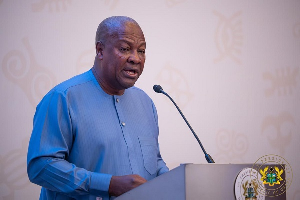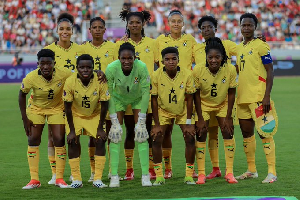The proposed ECOWAS railway system is expected to commence soon after years of neglect to connect Nigeria to Benin, Togo, Ghana and Côte d' Ivoire.
Transport ministers from the Economic Community of West African States (ECOWAS) are awaiting the technical details of the proposed single railway line, expected to be 1,178 kilometres long, to connect the sub-region.
This was made known after a four-member ECOWAS team of experts met in Accra to discuss modalities to implement the project.
The project is expected to transform the region’s transportation system by launching new high-speed passenger and goods rail services.
This will allow large container ships to concentrate on a smaller number of ports, thereby increasing efficiency and reducing the costs of international trade. It is also to facilitate a major industrialisation of West African countries, improve transportation of agricultural produce, and create immediate economic emancipation for the about 300 million people within the region.
A team of consultants assembled by HammcoBTB Engineering International Inc., Canada, to initiate a design, prepare construction specifications and implement a fast rail route for the sub-region presented a report on the project to representatives of the member countries in Accra.
Chief Obaga Idow, the team member from Nigeria, called on heads of West African states to remain committed to the implementation of the project in order to ease the myriad transportation difficulties hindering economic development.
He also asked the delegates to get actively involved to ensure the project is executed within a scheduled timeframe, saying “we need to learn the pitfalls in the West African Gas Pipeline project that took 35 years to start.”
In 2002, ECOWAS and the African Development Bank (AfDB) in Abuja signed a loan agreement for the feasibility study of a sub-regional railway Master Plan. The 14-month study cost approximately US$3.1 million.
Comparing ECOWAS and Southern Africa
Unlike the situation in southern Africa, there is no real regional rail network in the ECOWAS area, nor are the rail gauges internally compatible.
In fact, the national rail networks of ECOWAS‘s member states are mostly disconnected from each other. This is in contrast to southern Africa, where interconnected national railway systems form a regional railway network that spans half a dozen countries and extends from the southern part of the Democratic Republic of the Congo all the way to Durban in South Africa.
Further integration of West Africa‘s rail systems is complicated by the presence of multiple rail gauges. The case for further regional integration of railway networks is constrained by the relatively limited usage of existing lines.
Rail traffic density in West Africa is only a fraction of that found in southern Africa and North Africa. With the exception of Ghana Railways Corporation (GRC), most West African railways are serving well under one million traffic units per year.
The Nigeria Railways Corporation could potentially serve a much higher volume of traffic than it does today, but it has suffered long-term decline due to neglect and substandard performance.
By global standards, these levels of traffic are little more than what might be carried by a moderately busy branch line. Moreover, such low traffic volumes do not generate the revenue needed to finance track rehabilitation and upgrading. Under these market conditions, and given the technical incompatibilities, the case for further integration of railway networks is quite limited.
Before contemplating further extensions to the rail network, a turnaround in the performance of existing railways is sorely needed to regain competitiveness with road transport. The poor quality of service provided by West Africa‘s railways makes it increasingly difficult for them to compete with road transportation.
Most railways in West Africa operate at the standard at which they were originally built and now face major problems with competing modes of transport. West African tracks can accommodate relatively lightweight and slow-moving trains.
Poor maintenance over extended periods of time has caused the deterioration of many sections of the track beyond repair and resulted in a loss of competitiveness and rolling stock productivity.
Business News of Friday, 9 August 2013
Source: B&FT













